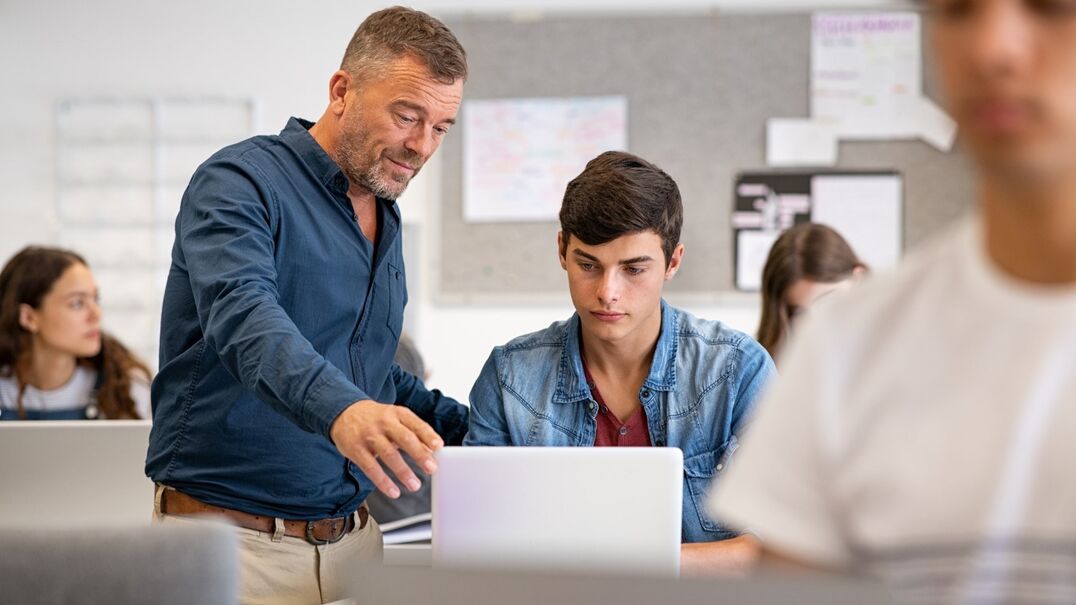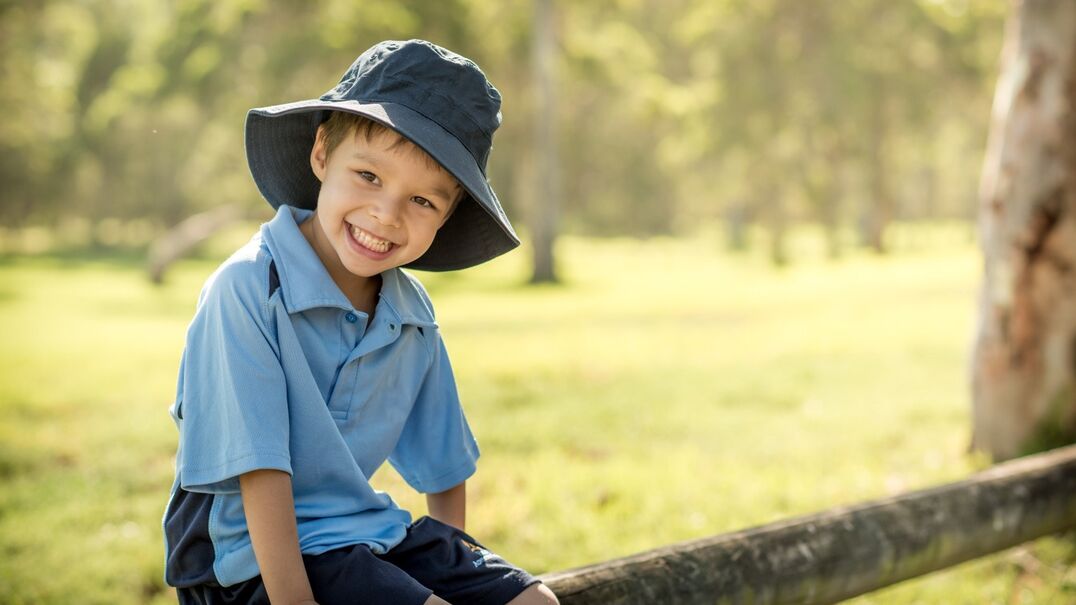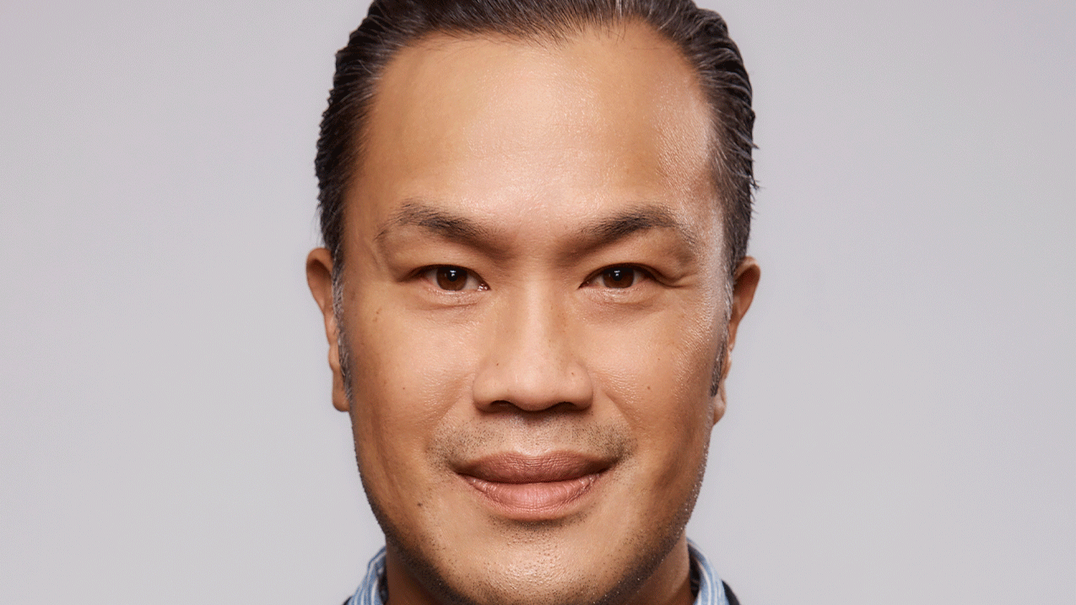
Tom Brunzell reflects on BSEM's first decade
Berry Street Education Model (BSEM) turns 10 in 2024, and we look forward to celebrating with you this year. We acknowledge the Wurundjeri people and the Gunaikurnai people along with their Elders past and present on whose lands BSEM was first conceived and implemented.
Building on novel approaches from more than 140 years of practice at Berry Street, BSEM’s strategies are in campuses and education centres in all Australian states and territories, and internationally.
This is a moment to savour and to renew our focus for the next 10 years of BSEM as a feeling, thinking and willing endeavour.
Feeling: BSEM is an intuition
As a young classroom teacher, I had an intuition that someday I’d become expert in supporting students who would not sit still, focus, and learn. Circuitously, I’ve become that expert.
I used to blame students’ poor choices when they arrived in the classroom like tornadoes. I blamed myself for being an inadequate teacher. Worse, on the roughest days, I judged these students’ adults for ‘not doing enough’ to support their child. I was wrong and unhelpful in those early judgements. But there was a spark of light in my consternation. I wanted strategies for those students I blamed for their own behaviour.
For those of us who have been educators for some time, we witness swings in pedagogical trends. Through it all remains the child. The student. The growing young person who desperately wants to fit in with their peers, to not embarrass themselves, to accomplish ambitious goals that they may be unable to articulate yet.
BSEM began as this intuitive spark: What if every action we take in schools, every approach to teaching and learning, could be reframed within a proactive therapeutic approach to education – necessary for some and beneficial for all?
BSEM has always been about values first. BSEM was initially a belief that we could repair generations of harm caused by schools, harm arising from neoliberal expectations, dominator values, colonialisation and racism. From the beginning, BSEM’s values have centred social equity.
I believed then, as I do now, that education must acknowledge the increasing complexity of childhood and therefore must be informed by our students’ ages and developmental stages. It must address with clarity that all students deserve the absolute best within our systems of supports. Education must also be holistic, acknowledging the integrated, connected nature of the body, mind, and spirit, and the pursuit of this integrated self that many of us aspire to.
I quickly learned that I was not alone. There were many educators, researchers, philosophers, and allied professionals looking for holistic, pragmatic, and proactive ways to support students with complex unmet needs – those students who challenge teacher practice because their struggles present as hyperactivity, escalation, or disengagement.
Over time, a flicker of an idea kept igniting the next idea and the next: How could teachers like me craft a classroom environment that was so proactive, so relational that over time, students themselves could be fortified to develop their own self-intervention mindset and eventually, proactively co-design their own supports?
Thinking: BSEM is innovation
As teachers, learning is our priority. We must remember that if the student isn’t learning, then from their perspective, school is a joke. We must also assume that the student wakes up every day with the best intentions: Today is the day that no one will bother me. Today is the day that I’ll be able to just get on with it. Today is the day I’ll succeed.
Teachers are not therapists. But we can design therapeutic learning environments founded on healthy relationships. BSEM integrates findings from trauma-informed neurosciences, with particular focus on the neurobiology of relationships and proactively addressing stress when learning.
I knew from the start that BSEM must be a step forward from social emotional learning (SEL). While SEL provides necessary critical foundations, it is not enough for meaningful change in our schools. BSEM needed to become a pedagogical approach, integrating wellbeing knowledge in all aspects of teaching and learning.
BSEM emerged from Berry Street’s own expertise in trauma-informed practice. Then fortified with emerging findings from the sciences of wellbeing, positive psychology, and positive education. If the research findings from trauma-informed practices helped us to meet complex needs, then the findings of wellbeing research helped us understand that we must also focus on what is right with our students. We must deliberately teach to their psychological resources and strengths.
Willing: BSEM is community
Community doesn’t just happen because we want it. Creating community and influencing systems takes thousands and thousands of micro-moments of social action, willed into existence by folks who know that change only occurs through community. Forming, growing, and sustaining community requires will.
Berry Street is filled with these people – people who are continuously service-rationing, that is, serving their local communities without enough staffing, funding, or resources to meet intergenerational social inequity head-on.
Ten years in, I recall special firsts: the first time we shared BSEM in Alice Springs at a flexible learning campus serving First Nations students; the first time a primary school convinced their feeder secondary to learn BSEM to ensure continuity of practice within their community; the first time BSEM went interstate, landing in Adelaide; the first time educators from our foundation course went on to our implementation masterclass; the first early years special adaptation that would eventually become BSEM Early Years; the first time we presented BSEM internationally, to audiences in Hong Kong. This year, new firsts will take BSEM practices global, reaching communities in Ireland, New Zealand, the United Kingdom, and the United States.
Our research community includes university teams from around Australia who have initiated investigations of BSEM’s impact. Now, we are building on the longitudinal evidence to embark on our next ambitious research program with University of Melbourne Associate Professor Jon Quach and a multi-university, multi-disciplinary research team to explore BSEM impact at a national scale.
I am enormously proud of BSEM’s 64 publications and counting, which can be found in the education and education psychology worldwide literature. BSEM’s peer-reviewed research publications have been included in meta-reviews and best-practice guides. Our approach has informed PhD scholars and trauma-informed practice investigations around the world. Our research papers, conceptual model, and practical strategies are taught in university pre-service teacher preparation programs and included in courses on school leadership. And our long-standing relationship with Teach For Australia (TFA) assists teachers to prepare to serve communities facing educational inequity.
It takes active will, engagement, and motivation to stay connected, build on what’s working, and innovate. BSEM started with pilots in two Victorian schools and is now practised by 70,000 educators in over 1,600 schools across Australia and beyond. We call these valued folks our BSEM Alumni Community, and we are excited to boost and showcase their efforts in our recently relaunched BSEM Alumni Resource Hub.
Moments to savour and reflect upon what BSEM was, is, and is becoming
After 10 years, my favourite moments to savour are when I witness two kinds of moments. One, when an educator lights up in our training and exclaims that this is the way they’ve always worked, and now they can describe it, name it, and be proud of it. The second moment that gives me proud pause is when educators report back to us that BSEM…works! And not just for the students they spend most time with. They report changes in how all the students treat one another and the school community.
BSEM is a style, a feeling. The science suggests we learn best when we feel challenged and feel good from it. In our work every day, we aspire to show that learning can and should be rigorous and fun.
BSEM is values and collaborative truth-telling, addressing the impact of intergenerational trauma, racism, and exclusion. We face head-on the hard truths of the past and invest in our children and young people, asking them to set high expectations for their world and how we support them.
Our hope is that BSEM has contributed to two outcomes: learning and wellbeing. These can be and must be the same endeavour. Student and school staff wellbeing is interconnected. In a service-rationing world, we still show up to serve our students one day at a time, while gazing on a horizon of social and systemic change.
Finally, BSEM is love. One of BSEM’s definitions of love is centred in unconditional positive regard for every young person, every family, and every school or professional that we support.
Love is strengthened when we find valued moments to deliberately focus on one another. I often reflect on the love (and therefore, focus) it takes to contribute to the lives of children, young people, families, and the systems of education we serve.
Thank you
In the spirit of love, my profound gratitude goes to the people and institutions that have supported us over this last decade.
My own professional trajectory shifted with the privilege of meeting and working directly with titans in the wellbeing sciences, Professors Martin Seligman and Angela Duckworth from the University of Pennsylvania. They welcomed me, along with a few ambitious leaders, to join them to better understand the impact of a whole-school approach to wellbeing. BSEM to this day strives for these possibilities with every campus we support.
Since coming to Berry Street, gifted leaders have had a vision far bigger than my own. Sandie De Wolf and Marg Hamley understood the potential and possibility for what BSEM could become.
BSEM’s community has always included the inspirational staff at the four campuses of the Berry Street School and central school leadership team guiding the care and evolving vision we have for our own students.
BSEM and the Berry Street School continues to be led with great care and vision by Berry Street’s CEO Michael Perusco and Executive Director Dr Annette Jackson. Annette was BSEM’s very first expert advisor and critical friend 10 years ago, who provided the very first round of fix-it feedback on the emerging domains of practice that would eventually become Body, Relationship, Stamina, Engagement, and Character.
BSEM’s community is supported by the generosity of our philanthropic supporters, corporate partners, trusts and foundations, and major donors. Collectively, you identified the promise of BSEM and helped us towards sustainable, systems-wide change.
Foundational amongst our research community is Professor Lea Waters, whose generosity to Berry Street extends over a decade now.
I also acknowledge the significant contributions of BSEM’s chief investigator Professor Helen Stokes from the University of Melbourne. Helen designed the first practice model of the Berry Street School. Along with Helen’s cherished colleague, Dr Malcolm Turnbull, they were the first research team to explore the impacts of BSEM.
I must also take this moment to thank Dr Jacci Norrish and Rob Sheehan, who have been integral to BSEM’s publications since the very beginning, along with the many co-authors and editors who have contributed to BSEM’s publications and worldwide dissemination.
And yes, to the beating heart of the BSEM community: our amazing team at BSEM both past and present. I love our team – and everything thing that we are. Our strengths, our innovations, our curiosities, our instigations, and our shadows make BSEM what it is and will be. I’m inspired by the light that shines from within each member of our team. That light guides schools to find their own way to support their local communities.
What’s next? Stay tuned… our team has a year of surprises in store for you as we celebrate, renew, and relaunch BSEM.
In the spirit of feeling, thinking, and willing the next 10 years of continuous learning.
Dr Tom Brunzell, Director Education




